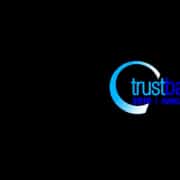|
Getting your Trinity Audio player ready...
|
By Alice BrightSky
First published on the FCPA blog
We’ve all heard of them — the Bernie Madoffs and Michael Milkens whose cinematic crimes have painted our perception of white-collar criminality.
However, while wrongdoers such as Madoff and Milken are rightly villainised for their misdeeds, their dramatic schemes tend to occlude the far more common phenomenon of smaller-scale white-collar crime.
By focusing on the “big fish,” we risk missing the reality that many white-collar crimes are committed not by operatic fraudsters, but by essentially decent people pushed to the brink by a combination of human pressures and poor business culture.
By most accounts, the perpetrators of many white collar crimes were not career criminals who set out to defraud their employers, clients, and shareholders, but rather businessmen and women possessed of strong ethical compasses who committed criminal acts in response to overwhelming personal pressures. Presented with personal obligations and difficulties (e.g. financial woes, family demands), a poor workplace culture, and the opportunity for wrongdoing, these typically honest people succumbed.
One felon states, in an article this month by the Duluth News Tribune, “Most white collar crimes are the cover-ups that come after a bad decision.”
Culture of dishonesty leads to individual honesty
Duke University cognitive science professor Dan Ariely digs deeper into the nature of bad decision-making. In his book The Honest Truth About Dishonesty: How We Lie to Everyone — Especially Ourselves, Ariely describes lab and public experiments he conducted to find out in which situations, and to what degrees, people will act dishonestly.
Among his conclusions were the discoveries that a culture of dishonesty often leads to individual dishonesty, and that the ability to rationalize dishonesty helps promote dishonest acts.
As another expert in behavioural economics and psychology, Daniel Kahneman, states in his book Thinking Fast and Slow, “the illusions of validity and skill are supported by a powerful professional culture. We know that people can maintain an unshakeable faith in almost any proposition, however absurd, when they are sustained by a community of like-minded believers.”
Business culture and how it impacts conduct has been a topic of focus for the compliance community for years now. Recent enforcements would seem to indicate that, despite the heightened focus on culture and lessons learned post financial crisis, the business world is still grappling with how to effectively deter misconduct.
Ariely discovered that signing a pledge to act honestly, seeing frequent moral reminders about the workplace, and working under close supervision all prompted people to act in accordance with the better angels of their nature.
Positive messaging can be contagious too
Most companies at this point arguably take those steps…requiring annual certification of receipt and acknowledgement of their codes of ethics, employing robust employee monitoring and embedding company ethics reminders in the day to day workplace environment. But perhaps the message needs to go a little wider and deeper…
As such, I offer five suggestions, beyond the usual suspects, to companies hoping to capitalise on what the research shows to achieve a culture that walks the talk:
- Take advantage of the “contagion” factor. Spend at least as much time on positive messaging as you do on cautionary tales. As Ariely said, “Acts of honesty are incredibly important for our sense of social morality….if we understand social contagion, we must also recognize the importance of publicly promoting outstanding moral acts.”
- The Rules of the Road must make sense. The research also points out that people violate rules that don’t resonate with them or seem to go above and beyond what’s reasonable. We’ve all been on that road… straight and wide through a non-residential area designated as a 35 mph zone. Did you nudge to 40 or 45 mph? Rules and requirements should have a clear and obvious purpose and value.
- Offer Gatorade not Kool Aid. Tone from the top is a much discussed element of compliance culture these days but it bears noting that the messaging, from senior management on down, shouldn’t feel like it’s conformity for conformity’s sake. Rather, it should feel like a fuel injection, invigorating people and engaging them with their work.
- Connect to the Big Picture. According to Ariely, we will only lie and cheat to the extent that we continue to maintain a positive sense of self. The more disconnected we are from the damage caused by our behaviours, the easier it is to maintain that positive self-image. Therefore companies should demonstrate the wider effect of seemingly small infractions to help dismantle the notion that corporate crime is victimless.
- Humanise the environment. Most companies offer services for employees going through tough times, but training managers in identifying at-risk employees and performing outreach may help connect those employees more quickly to the services available to them which may in turn help them avoid acting out of concert with their otherwise good nature.
By leveraging behavioural science learnings and taking a creative, proactive approach to deterrence, we can help ensure that white collar crime remains the purview of Madoffs and Milkens, and not that of essentially honest people who lost their way.
• Alice BrightSky is the senior director of Fordham University School of Law’s compliance programmes.







